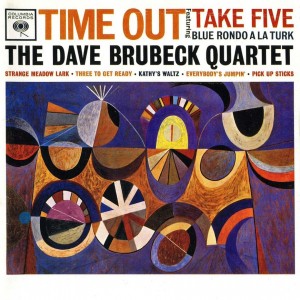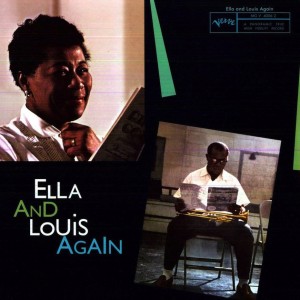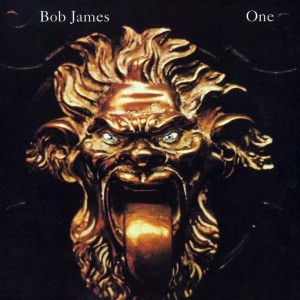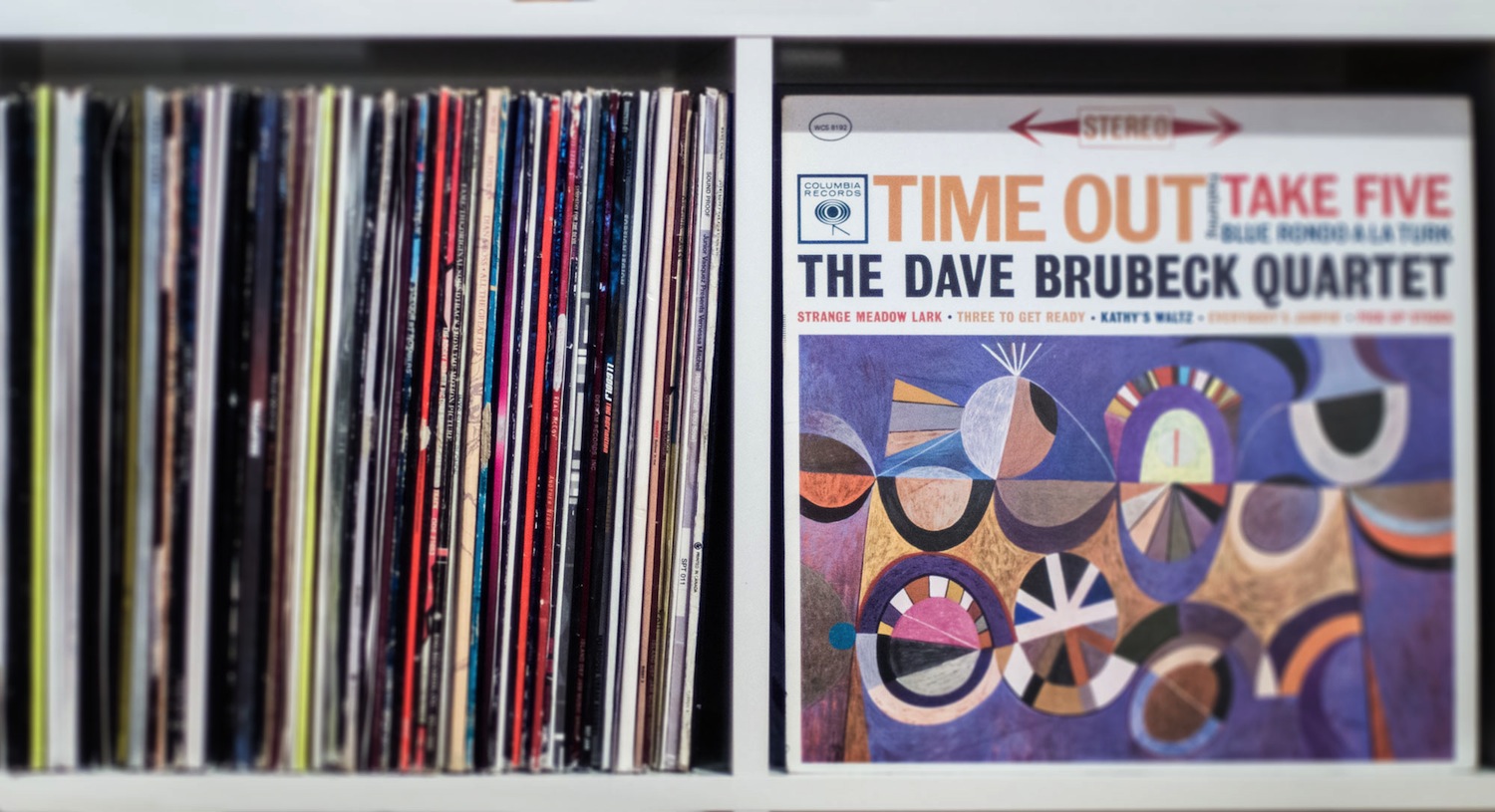
There’s a time and place for everything. Jordans for the court. Suit and tie for the wedding. Umbrellas for the rain. The same goes for music. As you get older, you will quickly learn that “appropriate” replaces “extreme” in all everyday life situations. If you think Skrillex wobbles and laser tag electro breakdowns pose as an acceptable backdrop for dinner with the girlfriends’ parents, please read on.
A lot of people don’t “get” jazz music. Some people just can’t get with its non-structured structure, lack of easy-to-memorize hooks, and the fact that (mostly) middle age men play it. It’s totally not sexy. But also completely sexy.
It’s all about setting the mood. Having jazz music ready on your ipod not only appeases the immediate tone of the room, but it will reflect the sophisticated musical palette we all know you possess. Jazz has this way of filling the hum in the room that would otherwise be filled with awkward silence. You can overpower it with conversation but it will still pop up when you need it. It can complement a happy time, or a solemn moment. It picks up the pace or slows your roll. “Setting the mood” would be an understatement.
Jazz is as jazz does: it’s cool, and it’s your friend.– If ever you are caught in a social emergency that calls for a savvy wingman to complement your soirée, have these albums in your reserve to bail you out.
The Dave Brubeck Quartet – Time Out
Ever buy an album just because you loved that one song, but one lazy day you played the whole thing, and it turned out to be pretty good?
That’s Time Out. Dave Brubeck and his quartet had been making a respectable living on the jazz circuit when they took a trip to Turkey and came back inspired to play with some unusual time signatures. Their record label reluctantly put out the LP. Time Out was initially panned by critics, but one song kept the album high on the charts.
“Take Five” is one of those “I recognize that song from somewhere” songs. Its signature saxophone chorus, played by Paul Desmond, has been used in countless commercials, TV shows and movies. It is the definitive “cool jazz” song that can instantly class up your joint/conjure up images of cigars and suits/turn your mancave into a speakeasy.”
The vibe of the rest of Time Out is consistent throughout. All the solos are played masterfully; there are no real heavy-handed moments and the tone is very playful. The quartet has a great chemistry. This is an album you can play virtually anywhere and offend no one.
Louis Armstrong & Ella Fitzgerald – Again
I’ll admit, this is a cop out to include two artists in one entry, but can you blame me?
Louis Armstrong and Ella Fitzgerald possess two of the most iconic voices in the history of music, let alone jazz.
This album came at the height of both of their respective popularities. Louis was a bona fide crossover artist (a breakthrough for African-Americans at the time), and Ella’s humungous catalogue to date had her crowned the “First Lady of Song.”
Again is their second duets album. Imagine a collaborative work a la Jay-Z & R. Kelly, but with infinitely more talented artists. Louis & Ella wrote the book of how to make a playful flirty duet with songs like “I Won’t Dance,” “Let’s Call The Whole Thing Off, and “A Fine Romance”
Louis takes his time kicking game to the ladies with his raspy drawl on “Let’s Do It (Let’s Fall In Love).” Ella’s pitch-perfect voice, along with her scat calls (freestyle ad-libbing), are showcased on “Stompin’ At The Savoy.”
Honestly, one would have a hard time not being charmed by Louis’ raspy voice and Ella’s lilting vocals. Together, they made jazz very much digestible to the public at large.
Bob James – One
Here’s a fun drinking game everyone can play: take a shot for every time you hear a part of this album that was sampled in a hip-hop song.
Guaranteed everyone will hit the floor by the end.
That’s because its end track, “Nautilus,” is one of the most repurposed songs in rap history; Slick Rick, Run-DMC, and A Tribe Called Quest all used it in their respective classics.
As an LP, this one is a bit of a wild card. It was a significant contribution to an era of jazz known as “fusion.” Many artists were rebelling from the standard forms of jazz, and also to reflect an experimental time where elements of rock and other genres were incorporated into the fold.
One was a very schizophrenic album. It had epic 9 minute opuses of free-flowing, high energy tracks, and four minute chilled-out ballads.
Put different parts of this album on when you feel like wilding out, or cooling down, at your discretion.
JOHN COLTRANE – A LOVE SUPREME
Cobain. Hendrix. Joplin. Winehouse. Coltrane?
While he didn’t pass away at 27, saxophonist John Coltrane was one of those artists of folklore: he arrived on the scene as a prodigy, worked like a madman in a very short period of time, battled personal demons (his, like many others, a heroin addiction), and passed away due to mysterious causes.
Legend has it that A Love Supreme was a by-product of John having a spiritual epiphany after a near-death drug overdose. Composed into four different suites, “Acknowledgement,” “Resolution,” “Pursuance,” and “Psalm,” this album is his own road to recovery.
“Love” is an eight-minute crash course of emotions – from remorse, to elation, to rage, and back – leaving you drained by the end of it.
Personally, this album has its greatest effect when working on something alone, late at night, an album you should listen to by yourself when you’re going through it, whatever “it” is.
The closest contemporary album that compares is Kendrick Lamar’s Good Kid, M.A.A.D. City; it is cinematic, completely sincere, and one of a kind relative to all else on the scene.
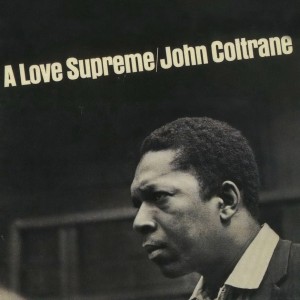
Ideal for: Introspection, zoning out, deep conversation, overlooking city skylines and realizing how grateful you are to be alive.
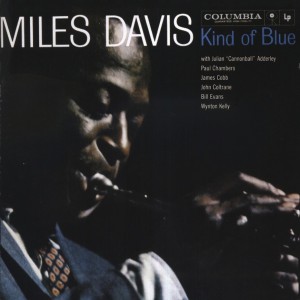
Ideal for: Enjoying the remains of the day. Moving at your own pace.
MILES DAVIS – KIND OF BLUE
If we traveled back into time about 60 years, we’d be experiencing the musical ancestry of Kanye West in Miles Davis. Don’t believe me? Peep his bio.
Miles Davis was a temperamental producer with a flare for fashion who had the uncanny ability of bringing together all-star musicians in a room to help actualize his far our vision of music. He was villainized by mainstream America on numerous occasions but ultimately his body of work has achieved a timeless status and influence on generations ahead of him.
Resemblance: uncanny!
Davis re-invented himself numerous times through the Birth of Cool and Electric Miles eras, but it was Kind of Blue that put him on forefront of the jazz scene.
Taken at face value, it’s a very melodic and easy-going album to take in, but the construction and bringing together of the album is very unique; Davis gave his band virtually zero time to rehearse the vague instructions and direction he wished them to go. The record button was pressed, and whatever ended up on tape was the final product. By virtue of serendipity, or the innate chemistry of the seasoned musicians in the room, a classic was born.
Kind of Blue is now officially recognized as an American treasure, and is an absolute must for music collection, plastic or virtual. No hyperbole.
There’s a time and place for everything. Jordans for the court. Suit and tie for the wedding. Umbrellas for the rain. The same goes for music. As you get older, you will quickly learn that “appropriate” replaces “extreme” in all everyday life situations. If you think Skrillex wobbles and laser tag electro breakdowns pose as an acceptable backdrop for dinner with the girlfriends’ parents, please read on.
A lot of people don’t “get” jazz music. Some people just can't get with its non-structured structure, lack of easy-to-memorize hooks, and the fact that (mostly) middle age men play it. It's totally not sexy. But also completely sexy.
It’s all about setting the mood. Having jazz music ready on your ipod not only appeases the immediate tone of the room, but it will reflect the sophisticated musical palette we all know you possess. Jazz has this way of filling the hum in the room that would otherwise be filled with awkward silence. You can overpower it with conversation but it will still pop up when you need it. It can complement a happy time, or a solemn moment. It picks up the pace or slows your roll. “Setting the mood” would be an understatement.
Jazz is as jazz does: it’s cool, and it’s your friend.– If ever you are caught in a social emergency that calls for a savvy wingman to complement your soirée, have these albums in your reserve to bail you out.
Ideal for: Making dinner, coffee dates, storefront background music.
The Dave Brubeck Quartet – Time Out
Ever buy an album just because you loved that one song, but one lazy day you played the whole thing, and it turned out to be pretty good?
That’s Time Out. Dave Brubeck and his quartet had been making a respectable living on the jazz circuit when they took a trip to Turkey and came back inspired to play with some unusual time signatures. Their record label reluctantly put out the LP. Time Out was initially panned by critics, but one song kept the album high on the charts.
“Take Five” is one of those “I recognize that song from somewhere” songs. Its signature saxophone chorus, played by Paul Desmond, has been used in countless commercials, TV shows and movies. It is the definitive “cool jazz” song that can instantly class up your joint/conjure up images of cigars and suits/turn your mancave into a speakeasy.”
The vibe of the rest of Time Out is consistent throughout. All the solos are played masterfully; there are no real heavy-handed moments and the tone is very playful. The quartet has a great chemistry. This is an album you can play virtually anywhere and offend no one.
Louis Armstrong & Ella Fitzgerald - Again
I'll admit, this is a cop out to include two artists in one entry, but can you blame me?
Louis Armstrong and Ella Fitzgerald possess two of the most iconic voices in the history of music, let alone jazz.
This album came at the height of both of their respective popularities. Louis was a bona fide crossover artist (a breakthrough for African-Americans at the time), and Ella's humungous catalogue to date had her crowned the "First Lady of Song."
Again is their second duets album. Imagine a collaborative work a la Jay-Z & R. Kelly, but with infinitely more talented artists. Louis & Ella wrote the book of how to make a playful flirty duet with songs like "I Won't Dance,” “Let's Call The Whole Thing Off, and "A Fine Romance"
Louis takes his time kicking game to the ladies with his raspy drawl on “Let's Do It (Let's Fall In Love).” Ella’s pitch-perfect voice, along with her scat calls (freestyle ad-libbing), are showcased on “Stompin' At The Savoy.”
Honestly, one would have a hard time not being charmed by Louis’ raspy voice and Ella’s lilting vocals. Together, they made jazz very much digestible to the public at large.
Ideal for: Engagement parties, Valentine’s Day dinners, breakfast in bed.
Ideal for: Interval training, arguing and making up.
Bob James - One
Here’s a fun drinking game everyone can play: take a shot for every time you hear a part of this album that was sampled in a hip-hop song.
Guaranteed everyone will hit the floor by the end.
That’s because its end track, “Nautilus,” is one of the most repurposed songs in rap history; Slick Rick, Run-DMC, and A Tribe Called Quest all used it in their respective classics.
As an LP, this one is a bit of a wild card. It was a significant contribution to an era of jazz known as “fusion.” Many artists were rebelling from the standard forms of jazz, and also to reflect an experimental time where elements of rock and other genres were incorporated into the fold.
One was a very schizophrenic album. It had epic 9 minute opuses of free-flowing, high energy tracks, and four minute chilled-out ballads.
Put different parts of this album on when you feel like wilding out, or cooling down, at your discretion.
JOHN COLTRANE – A LOVE SUPREME
Cobain. Hendrix. Joplin. Winehouse. Coltrane?
While he didn’t pass away at 27, saxophonist John Coltrane was one of those artists of folklore: he arrived on the scene as a prodigy, worked like a madman in a very short period of time, battled personal demons (his, like many others, a heroin addiction), and passed away due to mysterious causes.
Legend has it that A Love Supreme was a by-product of John having a spiritual epiphany after a near-death drug overdose. Composed into four different suites, “Acknowledgement,” “Resolution,” “Pursuance,” and “Psalm,” this album is his own road to recovery.
“Love” is an eight-minute crash course of emotions - from remorse, to elation, to rage, and back - leaving you drained by the end of it.
Personally, this album has its greatest effect when working on something alone, late at night, an album you should listen to by yourself when you’re going through it, whatever “it” is.
The closest contemporary album that compares is Kendrick Lamar’s Good Kid, M.A.A.D. City; it is cinematic, completely sincere, and one of a kind relative to all else on the scene.

Ideal for: Introspection, zoning out, deep conversation, overlooking city skylines and realizing how grateful you are to be alive.

Ideal for: Enjoying the remains of the day. Moving at your own pace.
MILES DAVIS - KIND OF BLUE
If we traveled back into time about 60 years, we'd be experiencing the musical ancestry of Kanye West in Miles Davis. Don't believe me? Peep his bio.
Miles Davis was a temperamental producer with a flare for fashion who had the uncanny ability of bringing together all-star musicians in a room to help actualize his far our vision of music. He was villainized by mainstream America on numerous occasions but ultimately his body of work has achieved a timeless status and influence on generations ahead of him.
Resemblance: uncanny!
Davis re-invented himself numerous times through the Birth of Cool and Electric Miles eras, but it was Kind of Blue that put him on forefront of the jazz scene.
Taken at face value, it's a very melodic and easy-going album to take in, but the construction and bringing together of the album is very unique; Davis gave his band virtually zero time to rehearse the vague instructions and direction he wished them to go. The record button was pressed, and whatever ended up on tape was the final product. By virtue of serendipity, or the innate chemistry of the seasoned musicians in the room, a classic was born.
Kind of Blue is now officially recognized as an American treasure, and is an absolute must for music collection, plastic or virtual. No hyperbole.

